Somebody asked me recently what some of my favorite S/4HANA Fiori Apps are. That’s a tougher question to answer than you might think. First off, there are 2K+ of them to pick from (2022 as of this writing to be exact). Even if there weren’t so many it’s still a tough question to answer. I think about it like I think about my children. I have three sons, but I don’t have a favorite. Further, I love them all for different reasons and different redeeming qualities that they have.
In the same way I want to talk about some example S/4HANA apps I like and why. I’ll refer to some general UX design guidelines. I’ll use comparisons to the existing applications I’ve used for over 15+ years.
Finally, a comment on the “wow factor” of these applications and something I refer to as MEV (Manager Entertainment Value). These apps are not as cool as consumer apps we use every day. They are also not the stuff you see in fancy presentations at Sapphire on the main stage, etc. They are just apps that people at companies around the world use every day to get their work done. Further, they move the bar for enterprise applications in the right direction, and that’s a key reason I see value in them.
Application 1- Stock- Single Material
It might seem too simple to most, but the best thing about this app is it’s an example of how Fiori apps streamline application workflow by simply locating common actions and application access all in one place. In the stock overview screen I have visibility to stock levels, but I also have access to perform additional actions for the material along the bottom of the screen. In traditional SAP GUI at least 5 other transactions would need to be remembered and entered to perform all of these actions. Recognition is better than recall in UX design.
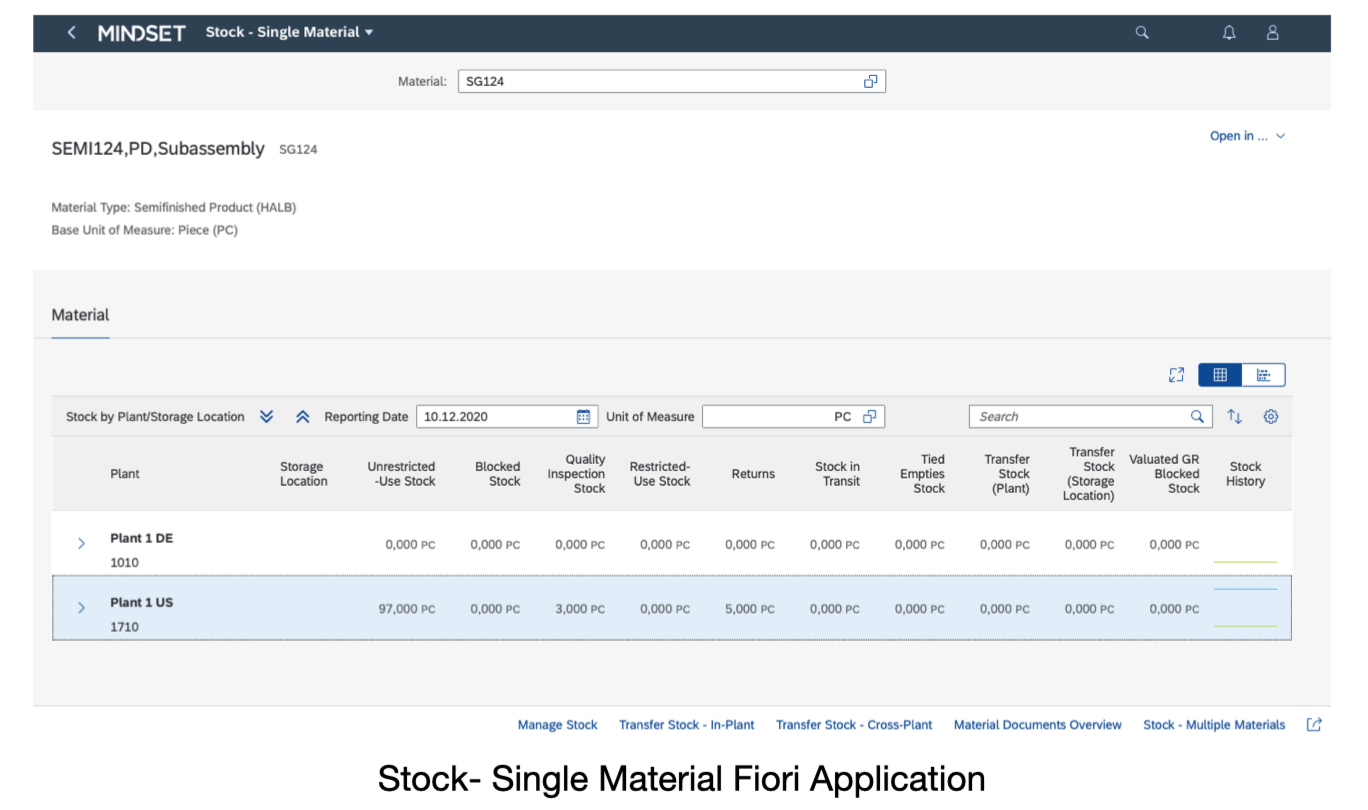
In addition to the consolidation of apps for stock management SAP has also streamlined the steps for managing stock. If you’re not familiar with how stock transfers work today you’ll have to take my word for how much this has been simplified. I don’t want to belabor that significant improvement here. However, from a UX design standpoint SAP has provided a pretty decent signifier for transferring stock. An up arrow indicates from which storage type you can transfer stock from. After selecting a particular type you then get an indicator for which storage types you can transfer stock to. This is relatively intuitive to figure out during first time use.
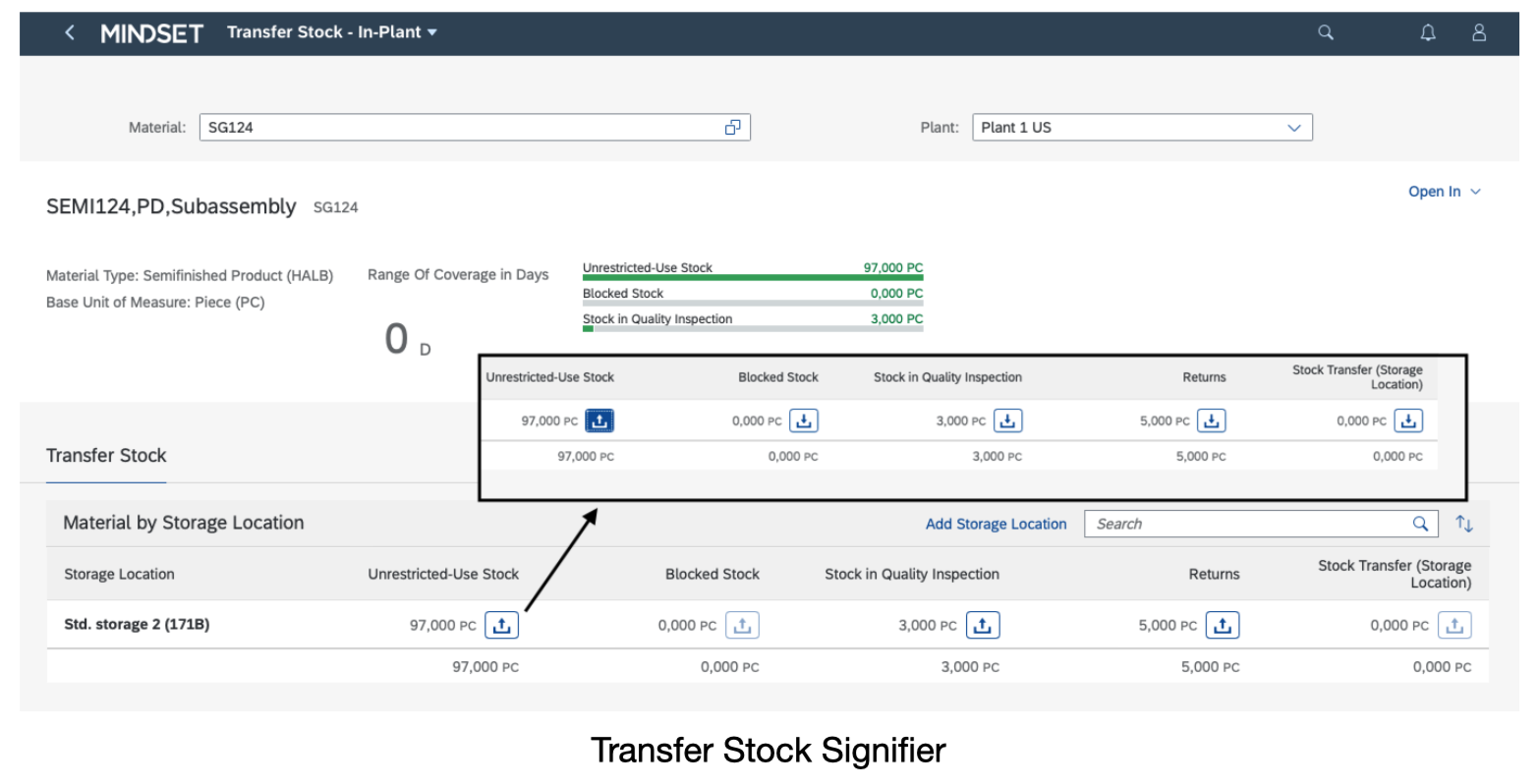
Finally, entering the transfer stock details like quantity, date, etc. is done in a screen overlay minimizing the need for additional screen navigation. The overlay also nicely balances the needed contextual information for the action being performed without overcrowding the screen.
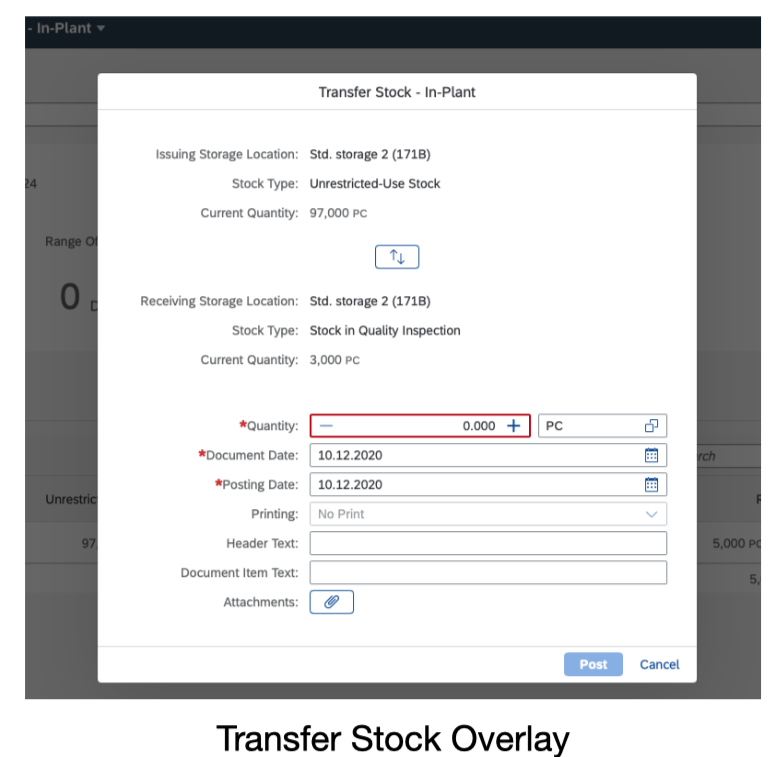
Application 2- Monitor Purchase Order Items
I chose this application to represent a category of apps you’ll find in SAP S/4HANA that foster Insights to Action. Some people also label these Analytics to Action apps. Users should not be forced to navigate to another tool like SAP BW, SAP Analytics Cloud, Tableau, Power BI, or Excel to filter through large amounts of data. The contextual switching and the use of multiple tools annoys end users.
They want to stay in the toolset where they are getting that part of their job done. Copy and Paste and constant switching back and forth and/or looking at multiple screens is not productive. Fiori apps like this provide enough searching, filtering, and visualization functionality to drill down to the items you want to take action on. Once you’ve figured that out then they also typically provide a good list of additional information or actions you can take.
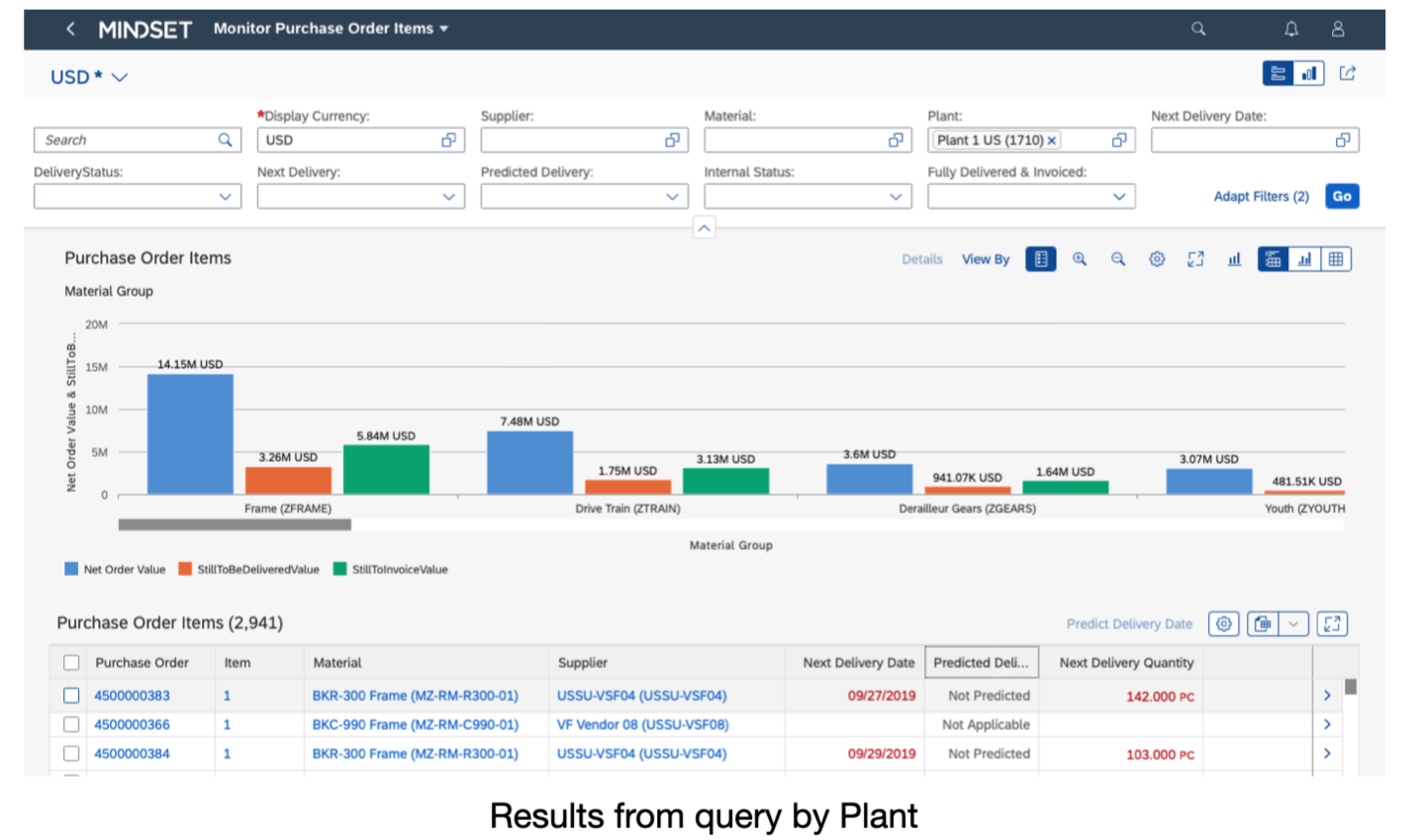
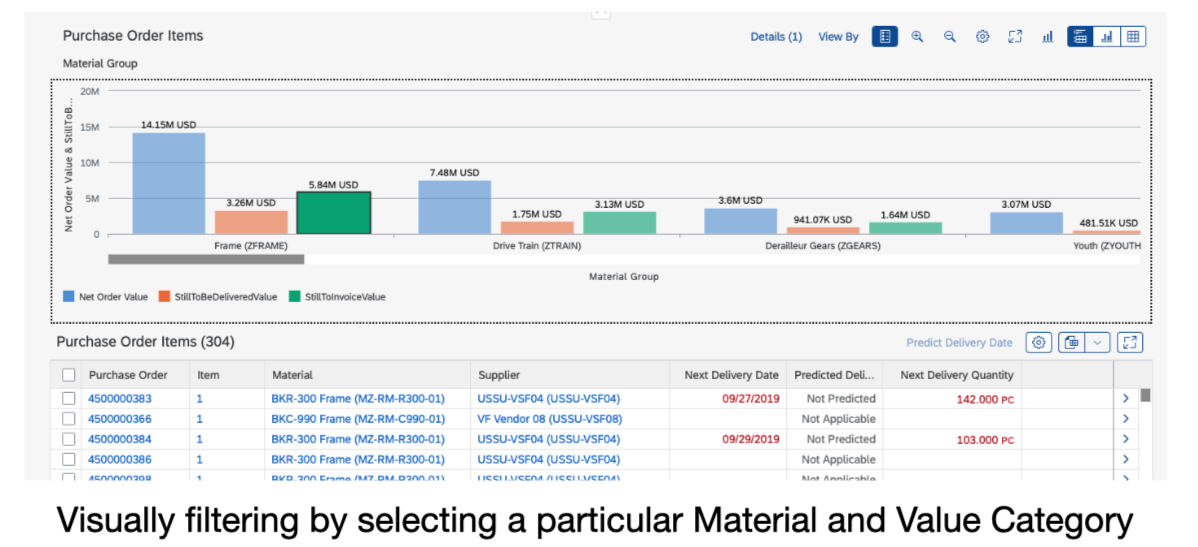

Application 3- Manage Scheduling Agreements
For the third application I wanted to highlight a transactional application in S/4HANA and ended up using the Manage Schedule Agreements as an example. For anyone not familiar with what a schedule agreement is, think of it as a special type of purchase order where a material/product will be ordered in considerable quantities frequently over an extended period of time.
Part of the reason I chose this application is due to the fact that when I first learned to use the transactions for purchase orders and scheduling agreements in SAP GUI I had to keep a MS Word document on my desktop with the title “cheatsheet.doc” to remember how to use them. I’m confident that would not be the case with the S/4HANA Fiori app.
Up to this point in the blog I’ve avoided showing a comparison of the S/4HANA Fiori app to the predecessor GUI transaction(s) it replaces. However, in this section it’s merited. Further, it really helps highlight the large differences in usability and learnability between the two. There is much more to show than simply the more delightful appearance of Fiori.
Let’s start with search. In SAP GUI I have to use a transaction to enter the exact schedule agreement number I’m looking for, or I can use a different transaction and enter a few input criteria and get a very archaic looking report result. In addition, if I want to change the criteria because the list is still too long or I’m not finding what I’m looking for I have to navigate back and forth between screens.
With Fiori I get everything in one place to change or update search criteria and update the results. I can change my table display intuitively and it’s clear what additional actions I can take. Even creating a new schedule agreement from this screen is available.
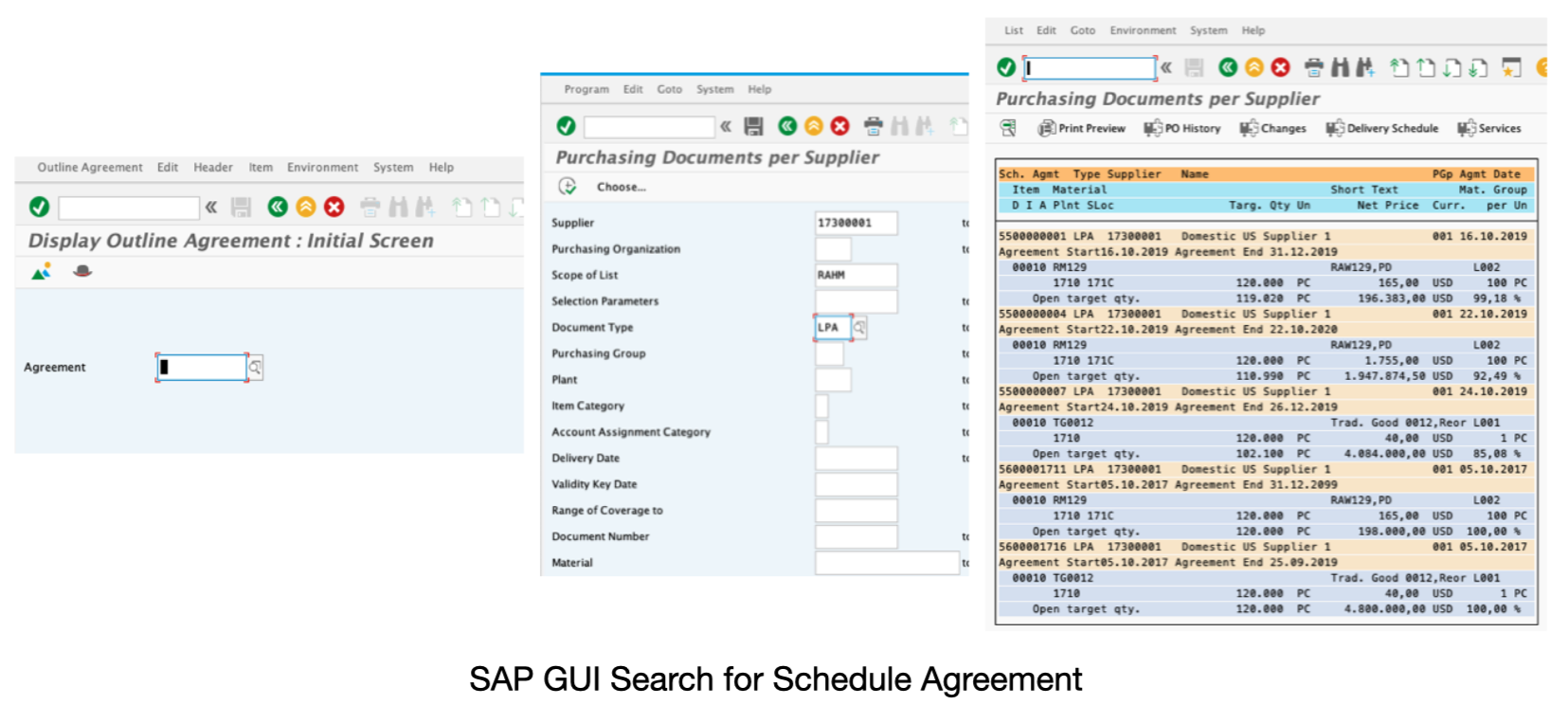
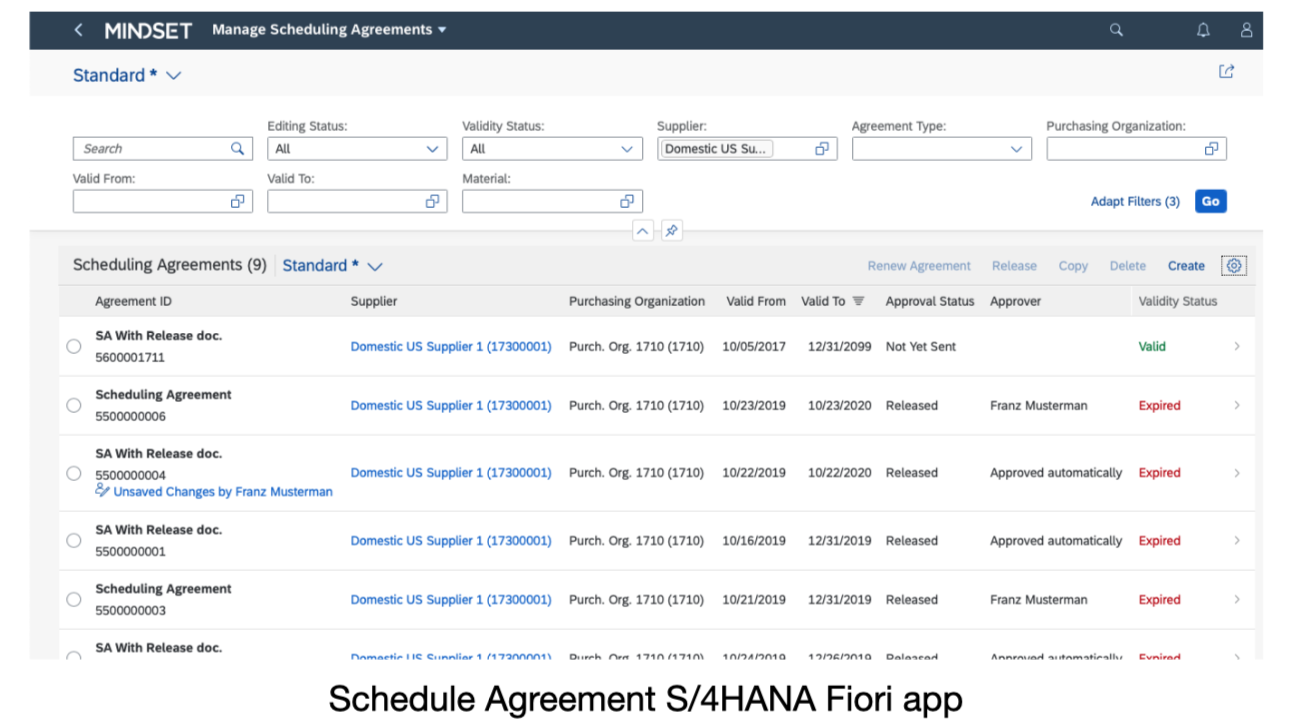
Moving on from search into displaying the information on the scheduling agreement we find that the SAP GUI transaction doesn’t clearly label the additional information on the schedule agreement or where to find it. You have to investigate each Icon at the top of the app to understand what it is and experiment with searching for the information you might want to know. It’s also not clear where to Edit/Update information or what or where to perform additional actions.
In Fiori all of the information displays on one main page. Section labels appear at the top in plain text and as you scroll down the viewable section highlights in the top tab bar. You could even use the browser search to find a field if you were completely new to using the application. Additional actions you can perform are clearly labeled. Not much searching for information and time wasted figuring out how the app works.
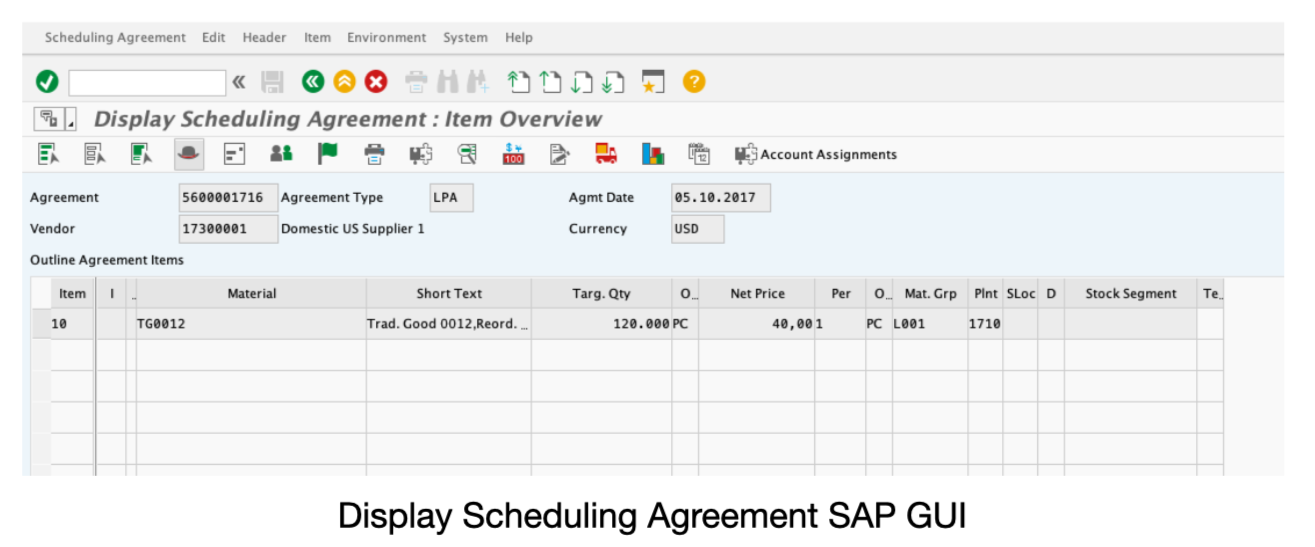
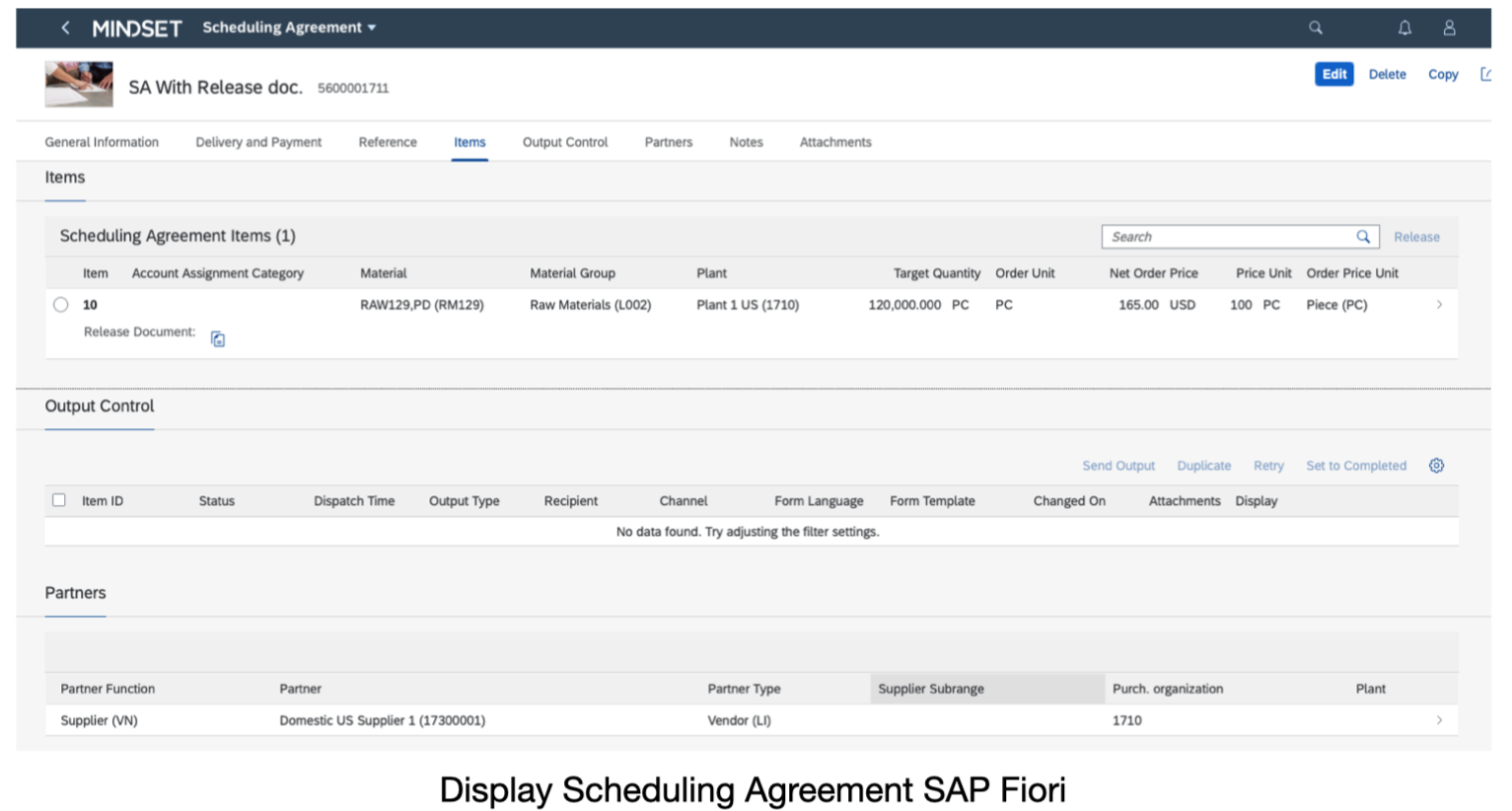
You can find the best improvements in the S/4HANA Fiori app in scheduling agreement creation. In SAP GUI when you’re a first time user (or even when you’re a returning user) you play a back and forth game of “what info do they require?”. You do that by typing in the first field (or no field) and hitting enter to see the errors that display at the bottom of the screen.
Unfortunately you have to do this one by one for many fields across multiple screens. That workflow combined with the “Where am I?” issue I previously mentioned in the display section becomes very frustrating as a first time or novice user. Remember that “cheatsheet.doc” file I kept on my desktop that I mentioned earlier? Yep… it literally had steps 1-25 listed out in perfect order that I would use to guide me through this.
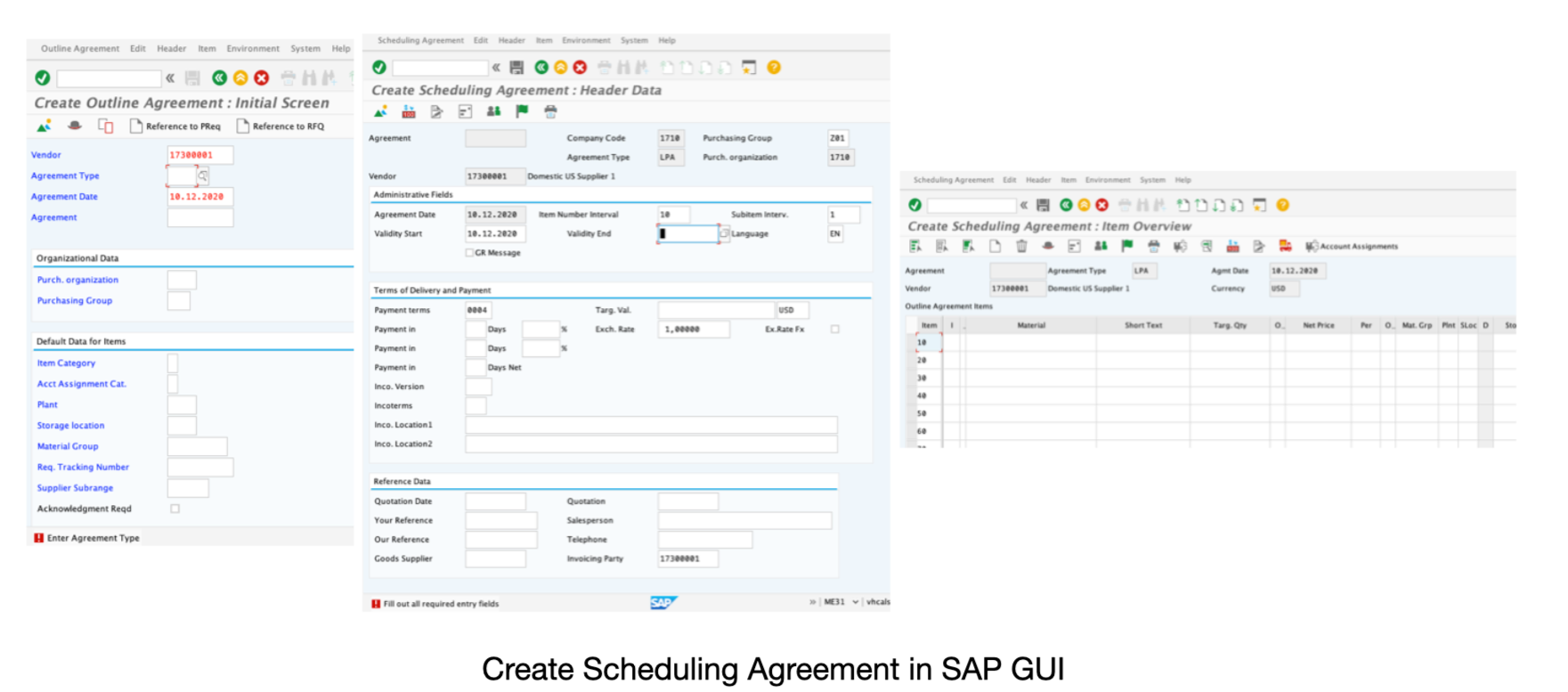
In the S/4HANA Fiori app everything is more intuitive, streamlined, and efficient. All required fields identifiy in multiple ways before completing it. As you fill out required fields they help populate other fields in the sections below. This will help you understand the relationship between them. Additional pop-up warning messages display as you progress.
You can even save the scheduling agreement in preparation which is a handy new feature. That is, come back to it later without finishing. This is rather than it forcing you to complete. And, to subsequently send it for approval right away. Is every field selection, dropdown, etc. exactly how I’d like to see it in the app? Probably not. However, it greatly improves over the GUI transaction. Therefore, I don’t believe I would need a cheat sheet to complete the process. The app guides me through the process on its own. I’d love to usability test the two against each other with new users to prove my suspicion.
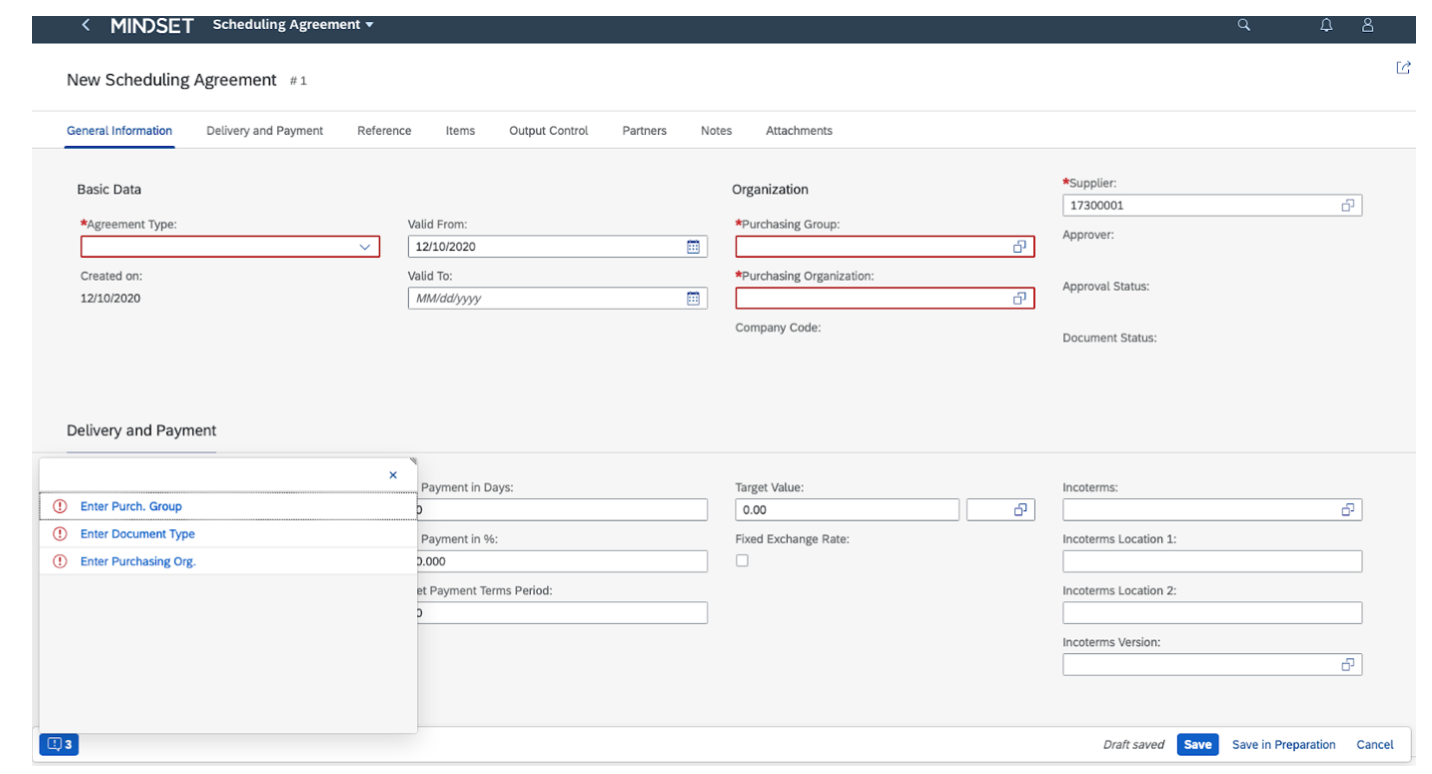
I hope this blog provided some great examples of how and why Fiori applications are worth investigating for your business. If you plan to implement S/4HANA, we believe utilizing Fiori should be a primary value driver in your decision making. Reach out to us for help in uncovering the value of Fiori for your business. For detailed information about all S/4HANA Fiori apps check out the SAP Fiori Apps Reference Library HERE.